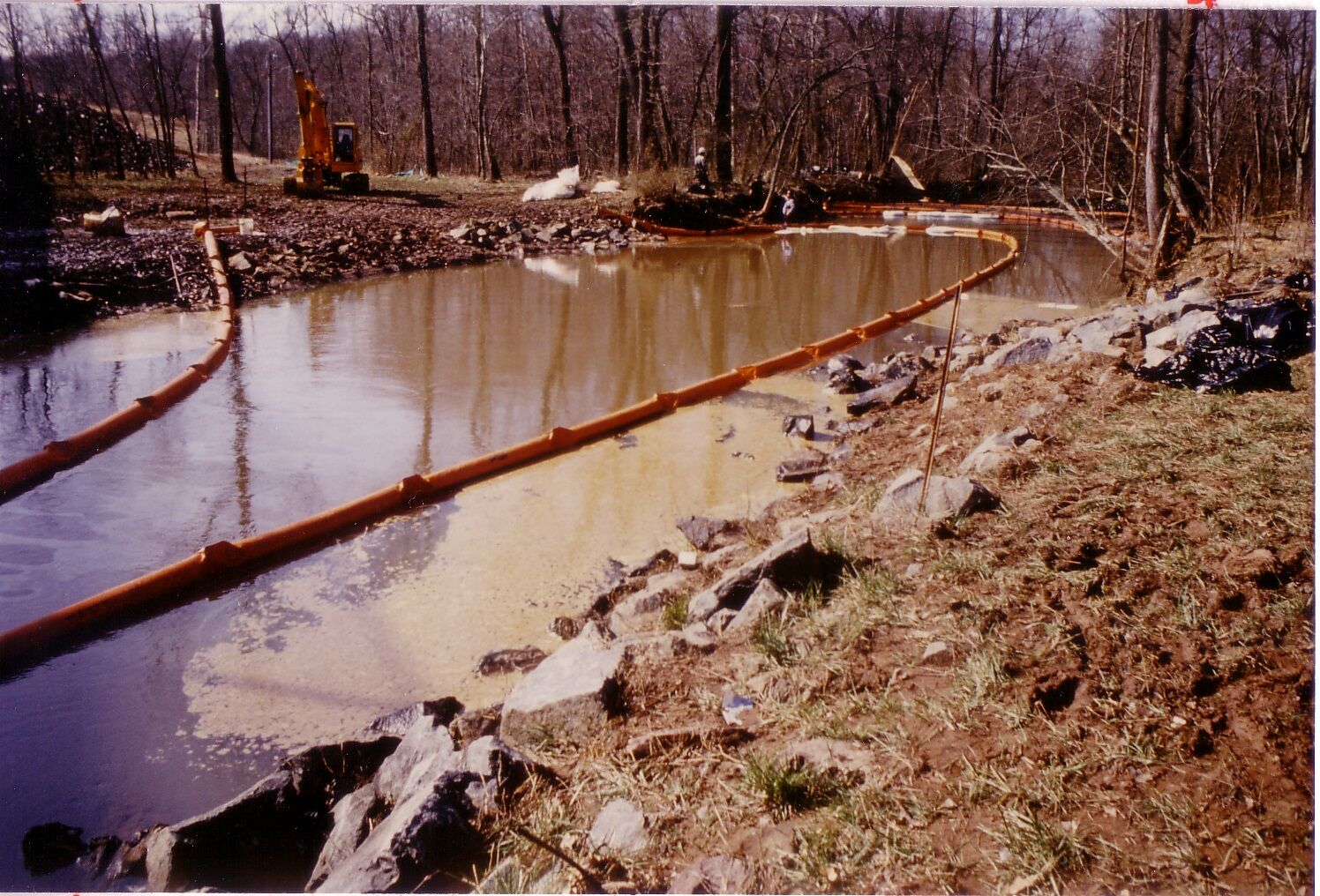
Next week marks 30 years since the Colonial Pipeline ruptured in Reston, Virginia, launching a geyser of oil, that flowed into the Potomac River — the D.C. area’s main source of drinking water.
On March 28, 1993, the Colonial Pipeline, which runs from Houston to New York, ruptured and spilled 407,736 gallons of No. 2 fuel.
“A 50 to 100 foot geyser of oil was observed behind the Reston Hospital Center,” recalled Michael Nardolilli, executive director of the Interstate Commission on the Potomac River Basin. “The oil flowed into Sugarland Run, which a tributary of the Potomac River, and then entered the Potomac at Algonkian Regional Park.”
Fairfax Water — one of three water suppliers in suburban Virginia, Maryland, and D.C. — had to shut down its drinking water intakes on the Potomac River for two weeks because of the spill.
“We were fortunate in that the spill hugged only the Virginia side of the Potomac River, so it did not interfere with WSSC’s water supply or the Washington Aqueduct,” said Nardolilli.
WSSC Water, which serves most of Montgomery and Prince George’s County, and the Washington Aqueduct, which supplies D.C., Arlington County, and the City of Falls Church did not need to shut their intakes.
“The disaster caused severe impacts to wildlife and national park lands, and resulted in $25 million in cleanup costs, and a multi-million dollar settlement with Virginia, D.C., and the federal government,” said Nardolilli.
Oil was detected as far downstream as Quantico.
Potomac River is sole source of drinking water for much of region
“In those days, there was a lot less growth in Fairfax County, so they were able to switch to their other, off-river backup source, which is the Occoquan River, to supply the needs of their customers,” said Nardolilli. “But, given the growth in the area, that is no longer feasible.”
While WSSC Water draws 30% of the water it needs from the Patuxent River, the Potomac River is the sole water supply for the Washington Aqueduct, with only a one-day supply of drinking water available.
In December 2022, D.C. Del. Eleanor Holmes Norton successfully spearheaded the effort to authorize the U.S. Army Corps of Engineers to conduct studies to find a secondary drinking water source and additional drinking water storage. However, funding has not been secured to pay for the study.
Nardolilli and Norton intend to remind Congress that a spill, like the Colonial Pipeline spill 30 years ago, could happen again.
“We were fortunate that only one of the water supplier intakes had to be shut down, but that was a wakeup call that we need to build into our system more resiliency, to have supplemental storage or a backup water supply,” Nardolilli said.
“We’re not talking about constructing anything anytime soon — the studies take $3 million and probably three years to conduct.”
Since the 1993 spill, water officials have been researching ways to store water. WTOP reported in 2016 that the Travilah Quarry in Montgomery County was being considered. Other alternatives include underground water storage and recycling Potomac River water.
Nardolilli acknowledges with still-to-come studies, it will take a while before the area has additional storage or a backup supply.
“Hopefully before the next disaster happens on the Potomac, and hopefully before a major drought,” he said. “Those are the two things that keep me up at night.”








